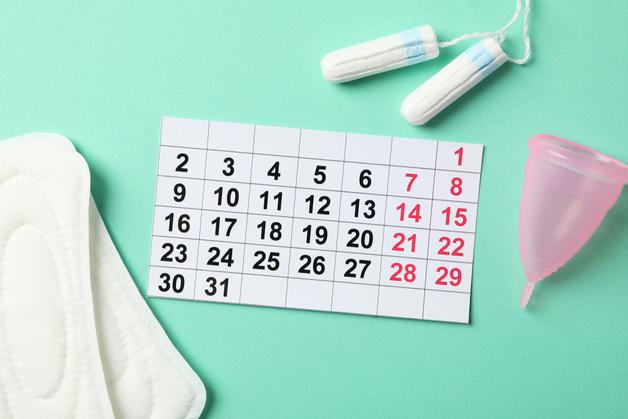A flutter of anticipation mixes with waves of doubt—pregnancy, with all its unpredictability, often feels a bit like embarking on an uncharted adventure. Every parent wonders: Is my baby growing as expected? When should the next check-up be scheduled? Will I really be ready when it comes time to hold my little one? The pregnancy calendar steps in here, not as a mere planner, but as a steadfast companion for this life-altering journey. From the subtle, almost magical shifts that sneak up in early weeks to the unmistakable kicks and twists that can take your breath away by the third trimester, this approach promises structure and calm within the constant whirlwind of questions. Medical milestones, nutritional choices, self-care routines, emotional swings—all traceable, trackable, and manageable with your personal roadmap laid out week after week.
A well-mapped pregnancy calendar can turn overwhelming uncertainty into purpose, helping you anticipate not just clinical appointments but even the gentler moments—the first signs of movement, the tentative nursery plans, and the quiet self-reflection that often accompanies waiting for your baby’s arrival.
How does one balance the host of medical appointments, dietary needs, and the deluge of new sensations? How to make sense of numbers—weeks, trimesters, due dates—without feeling lost in arithmetic? The answers, ultimately, lie in understanding your pregnancy through a pregnancy calendar, tailored to guide, reassure, and empower at every turn.
Why a Pregnancy Calendar Feels Essential
Toppled routines, sudden food aversions, the stealthy emergence of a baby bump—each day may blend the extraordinary with the mundane. With a pregnancy calendar, weeks break down into tangible, graspable milestones. Some days, you’ll mark a major ultrasound; other days, you’ll jot down trivial symptoms—slight swelling, fleeting mood changes, or perhaps the first flutter of movement that signals a baby growing on its own mysterious schedule.
- Monitoring maternal and fetal health is simplified. Every stage holds its own suite of tests, from nuchal translucency scans in the first trimester to glucose tolerance assessments midway.
- Tracking appointments, from the routine to the one-off, curbs the chaos: ultrasounds, specialist consultations, perhaps even vaccination reminders.
- Estimating the due date and preparing for birth transforms from guesswork to clarity—a date to rally around, whether the schedule shifts or not.
- Understanding week-by-week physical changes: Why does fatigue suddenly feel overwhelming? When do the odd food cravings reach their peak? A glance at the calendar often brings reassuring context.
- Reducing parental stress: Each ticked box, every noted change, converts disquiet into structured anticipation.
The pregnancy calendar supports more than organization—it’s a container for the emotional ebbs and flows, for unscripted notes of joy or brief moments of worry. Whether as a detailed app sending customizable reminders or as a beloved paper planner with scribbles and highlights, the principle remains the same: an evolving record that grows with you.
Understanding Weeks, Trimesters, and Due Dates
Pregnancy, in medical terms, is counted from the first day of your last menstrual period (LMP). This means that before conception even occurs, you’re already two weeks “pregnant” on the calendar—a detail that can feel counterintuitive yet serves to standardize developmental tracking.
- Full-term pregnancy: Usually spans around 39 to 40 weeks, with only a slim possibility (about 5%) of delivering precisely on the estimated due date. A two-week margin on either side remains within normal range.
- Trimester breakdown:
- First trimester (weeks 1–12) marks the establishment of vital organs, a cascade of new hormones, and often the toughest phase emotionally and physically.
- Second trimester (weeks 13–28) is generally marked by renewed vitality, visible fetal growth, and ultrasound milestones (the mid-anatomy scan around week 20 is especially anticipated).
- Third trimester (weeks 29–40+): Your baby gains most of their weight, the uterus stretches to its limit, and you may feel a blend of excitement and nervousness as labor approaches.
Due dates may shift. Menstrual irregularities, genetic screening outcomes, or a confirmed conception date—especially in cases of assisted reproduction—all alter the calculation. Ultrasounds, especially in early pregnancy, help refine the expected timeline.
Building and Personalizing Your Pregnancy Calendar
Setting the Foundation
The pregnancy calendar typically starts with your LMP, forming the anchor for tracking fetal age and plotting out prenatal visits. Add 40 weeks or 280 days—here’s your provisional due date, a focus around which much will be organized: appointment intervals, key screenings like the anomaly scan, and adjustments for specific scenarios like twins or special medical considerations.
Week-by-Week Tracking: Why Every Week Matters
Why so granular? Because fetal development is a symphony of rapid, intricate milestones. Week by week, limbs lengthen, organs mature, and you might notice new symptoms nearly overnight. The calendar provides space not just for medical facts, but for living details—when movement is first felt (often between weeks 16 and 25), when a strange craving sets in, or when energy returns in the second trimester after a long stretch of fatigue.
- Document each change visibly—does the bump pop earlier than expected, or do symptoms pass unnoticed?
- Notes for self-care: See a trend in your diary—like consecutive nights of poor sleep? This can be flagged up in consultations.
- Medical timing: Lab tests, Tetanus-diphtheria-pertussis (Tdap) vaccine, and gestational diabetes screening—each has an optimal window, and your calendar ensures nothing is left to chance.
First Trimester: Weeks 1–12
Often shrouded in mystery, the first trimester may pass before friends or family know your news. Internally, though, a cascade of changes unfolds:
- Weeks 1–4: Subtle shifts—tiredness, swollen breasts, sharper sense of smell. Pregnancy is confirmed by urine or blood tests, and your pregnancy calendar officially springs to life.
- Weeks 5–8: Core organs form, the heart begins its wild, intermittent flutter. Early ultrasound checks viability and placement in the uterus (crossing out risks like ectopic pregnancy). Multiple gestations are usually confirmed now.
- Weeks 9–12: Nutrition advice comes to the fore: folic acid for neural tube defects, iron if your levels drop, focusing on balanced meals. Nuchal scan and early genetic screens loom.
Is morning sickness relentless? Keeping a daily log may reveal triggers or time patterns. And those mood swings—hormonal interplay often leaves you oscillating between euphoria and deep fatigue.
Second Trimester: Weeks 13–28
The world may seem brighter. Many report a break from nausea; energy rises gradually. The news is often shared widely during these weeks.
- Weeks 13–16: Baby’s growth is steady but not yet spectacular. A good phase for tackling big practical tasks—nursery, maternity wear, reallocating household roles.
- Weeks 17–20: First definite kicks felt, typically described as flutters or gentle thuds; the mid-pregnancy scan charts organ development, screens for structural anomalies, and often reveals the baby’s sex (if you wish to know).
- Weeks 21–24: Follow-up appointments verify both fetal and maternal well-being; weight gain, blood pressure, and urine are checked to pre-empt gestational conditions.
- Weeks 25–28: Birth classes become relevant, hospital bag lists start forming, relatives may suggest choosing pediatricians. The pregnancy calendar becomes denser—appointments mix with checklists and personal notes.
Third Trimester: Weeks 29–40+
The finishing stretch blends anticipation and discomfort. Back pain, swelling, and sleep disturbance become common, while fetal movements, though sometimes restricted by cramped quarters, remain vital indicators of well-being.
- Weeks 29–32: Childbirth preparatory sessions—often incorporating breathing or yoga—can be scheduled. Social support feels especially important here, as emotional vulnerability peaks for many.
- Weeks 33–36: Contractions may begin (Braxton Hicks: painless tightening), hospital bag must be ready, car seat installed. Final glucose or anemia screenings are performed.
- Weeks 37–40+: Discussions about delivery—preferred modes, pain relief, support persons—intensify. Any reduction in fetal movement or onset of strong and regular contractions is a cue for prompt consultation.
A pregnancy calendar in these weeks may display overlapping lists—packing, medical records to gather, pediatric appointments, and—rarely planned—final moments for reflection or worry.
Organizing Prenatal Care and Daily Life
Routine prenatal visits are the backbone of a healthy pregnancy, typically scheduled as:
- Once a month until week 28
- Every two weeks from 28 to 36
- Weekly thereafter till delivery
Key tests are spaced strategically: genetic screening, anomaly scan around 20 weeks, gestational diabetes test at 24–28 weeks, and Group B Strep screening closer to term. Marking these in the pregnancy calendar helps parents visualize what’s next, ensuring nothing is missed.
But clinical milestones are only part of the story. Baby shower dates, last days of work, time for relaxation, and spontaneous moments of joy—they all belong on your map. The more complete your record, the richer the keepsake once the journey concludes.
Nutrition, Lifestyle, and Wellness With Your Pregnancy Calendar
A meticulously noted pregnancy calendar can guide even the less visible facets of maternal health.
- Diet: Prioritise foods rich in folic acid, iron, calcium, and omega-3s. Routine notes about meal preference or dietary aversions may help identify deficiencies or explain odd cravings. Track water intake—8 to 10 cups per day is generally recommended unless otherwise directed by your provider.
- Exercise: Regular, safe movement—walking, prenatal yoga, light swimming—supports mood, circulation, and sleep, but is always subject to personal medical clearance.
- Rest and emotional support: Specify bedtime, nap patterns, or moments of tension. Refer back during check-ups to reveal any underlying sleep difficulty or stress.
- Risk management: Record reminders to avoid certain foods (unpasteurized dairy, undercooked meat, fish high in mercury, excessive caffeine) right alongside your daily symptoms tracker.
Common Pregnancy Changes and Self-Management Tips
Each phase introduces a changing set of symptoms—sometimes subtle, sometimes profound.
- First trimester: Fatigue, food aversions, breast tenderness, volatile moods.
- Second trimester: Joints may feel looser (relaxin hormone increases flexibility), “pregnancy glow,” and those first visible stretch marks.
- Third trimester: More pronounced swelling, heartburn, shortness of breath, and vivid dreams.
Symptom tracking through your pregnancy calendar can reveal trends—like heartburn after certain foods or swelling after long days on your feet. This record not only supports self-management but facilitates clear communication with your doctor. Alarming symptoms—such as bleeding, severe headache, vision changes, or reduced fetal movement—always warrant urgent attention and prompt notation in your tracker.
For common discomforts:
- Small, frequent meals help ease indigestion.
- Elevating your legs can combat swelling.
- Pregnancy pillows promote better sleep.
- Dedicated time for relaxation—meditation, slow breathing, gentle stretching—helps stabilize mood.
Digital Tools, Apps, and Practical Support
Modern pregnancy support has leapt from static paper forms to interactive digital platforms. The pregnancy calendar now often lives on your phone: apps offering symptom checklists, customizable reminders, educational content, and even mood tracking. Data privacy and personalisation are key—choose an app that fits your daily rhythm. Remember, however, that these tools are aids: when facing special circumstances—multiples, pre-existing health conditions, or unexpected complications—adaptation and regular consultation with your provider are essential.
Digital apps may go beyond reminders: symptom questionnaires, pediatric advice, breastfeeding tips, even emotional wellbeing support. The right calendar acts not just as a timeline, but as an evolving support network.
Key Takeaways
- The pregnancy calendar is more than a timeline; it is a living record, amplifying calm and preparation for every phase of pregnancy.
- It brings clarity to week-by-week development, organizes clinical and personal milestones, and fosters confidence.
- Each pregnancy differs—shape your calendar to your body, mind, and familial needs.
- Tracking your appointments, nutrition, symptoms, and emotions increases self-assurance as you approach labour and delivery.
- Digital or paper, the choice is yours. What matters is using it as a tool for empowerment and peace of mind.
- For advice tailored to your unique needs, along with free health questionnaires for your baby, you can download the application Heloa—a comprehensive ally on your parenthood journey.
Questions Parents Ask
What is a pregnancy calendar and how does it help parents?
A pregnancy calendar is almost like a personalised timeline, breaking down the entire pregnancy week by week or month by month. It not only helps track the baby’s growth but also acts like your reminder bell for upcoming check-ups, vaccination dates, and even simple joys—like feeling the first baby kick. Parents often find both digital and paper formats handy, as these calendars help make sense of new symptoms, schedule medical visits, and keep emotional highs and lows in perspective.
Are there different types of pregnancy calendars or calculators?
Yes, plenty! Some calendars are very basic—offering a straight weekly or trimester overview. Others are enriched with features such as daily health tips, symptom trackers, doctor appointment reminders, or ovulation calculators. Interactive apps can send you tips relevant to your stage—nutrition reminders, movement tracking, or key safety advice. The best choice depends on whether you want simplicity or advanced features tailored to your pregnancy needs.
Can a pregnancy calendar tell me when I might feel my baby move?
Absolutely. Most pregnancy calendars highlight the expected time frame—usually between the 16th and 25th weeks—for those first, fluttery sensations often described as quickening. It’s a special milestone for most parents, worth noting in your calendar. This record allows you to discuss any concerns with your doctor and offers reassurance if things feel a little different from what you expected—every baby finds their own rhythm!
Further reading:









